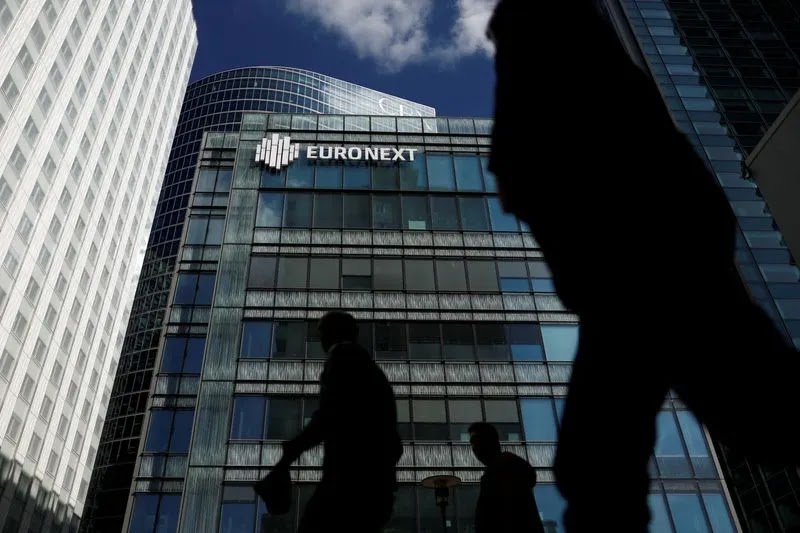Nvidia CEO Highlights Strategic Edge in AI Industry Shift
 |
| Huang Unveils New Chips and Partnerships at GTC 2025 / Reuters |
Nvidia CEO Jensen Huang recently took the stage at the company’s annual software developer conference, GTC 2025, in San Jose, California, to assert Nvidia’s strong footing amid a pivotal transformation in the artificial intelligence landscape. With the industry pivoting from training expansive AI models to leveraging them for precise inference tasks, Huang emphasized that Nvidia’s advanced AI chip technology positions the company as a leader in this evolving market. This shift, which demands significantly more computational power for reasoning and autonomous AI agents, comes as competitors like China’s DeepSeek challenge Nvidia’s dominance with claims of efficient chatbot development using fewer resources. Despite a 3.4% dip in Nvidia stock following the event, Huang’s presentation underscored the company’s long-term vision, unveiling next-generation chips and a high-profile partnership with General Motors to cement its influence across AI and automotive sectors.
Huang, donning his signature black leather jacket, described the conference as the “Super Bowl of AI,” highlighting how Nvidia’s decade-long investment in software tools and high-performance data center chips has fueled its meteoric rise. These chips, often priced in the tens of thousands of dollars, drove Nvidia’s $130.5 billion in sales last year, powering cutting-edge AI systems like ChatGPT and Claude. However, the transition from AI model training to inference, where models deliver actionable insights, has sparked investor scrutiny, particularly with DeepSeek’s emergence as a contender boasting cost-effective solutions. Addressing this, Huang argued that the computational needs for “agentic AI,” autonomous systems requiring minimal human oversight, are exponentially higher than previously anticipated, projecting a demand 100 times greater than last year’s estimates. This assertion reinforces Nvidia’s strategic focus on delivering unparalleled AI chip performance, a cornerstone of its market leadership.
Central to Huang’s keynote were announcements of new AI chip innovations designed to meet these escalating demands. The Blackwell Ultra GPU, slated for release in the second half of 2025, promises enhanced memory capacity to support larger AI models, building on the current Blackwell lineup. Following this, the Vera Rubin chip system, named after the famed astronomer, is set to debut in 2026 with even faster speeds, featuring advanced configurations like 8 stacks of HBM4 memory and a subsequent “Ultra” version with 12 stacks. These developments aim to address the dual imperatives of rapid response times and scalability, which Huang likened to the immediacy expected from web searches. He stressed that Nvidia’s chips uniquely excel in both enabling AI systems to handle massive user queries and delivering swift, intelligent responses, a competitive edge critical for retaining customer loyalty in real-time applications.
Despite these bold strides, Nvidia faces hurdles that tempered investor enthusiasm, reflected in the stock’s decline to $115.43 on the conference day. The Blackwell rollout encountered delays due to a design flaw affecting manufacturing, though recent reports of “amazing” order volumes signal robust demand. Analysts, including Ben Bajarin of Creative Strategies, noted that much of the conference news aligned with expectations already baked into Nvidia’s valuation, which has soared over 400% in three years. This tempered reaction contrasts with the company’s ambitious roadmap, which extends to the Feynman chips planned for 2028, signaling a relentless pace of AI chip advancements. Meanwhile, competition from DeepSeek, whose chatbot reportedly rivals top models with fewer resources, has fueled debates about Nvidia’s long-term dominance, particularly as the industry grapples with diminishing returns from traditional data center scaling.
Beyond hardware, Nvidia unveiled the DGX Workstation, a powerful personal computer leveraging Blackwell chips, crafted in collaboration with Dell, Lenovo, and HP. Positioned as a rival to Apple’s high-end Macs, Huang showcased its motherboard, proclaiming it the future of PC design for AI-driven tasks. Complementing this hardware push, Nvidia introduced Dynamo, a free software tool to accelerate AI reasoning processes, further enriching its ecosystem for developers. These offerings underscore Nvidia’s holistic approach, blending cutting-edge AI chip technology with accessible software to maintain its appeal among researchers and enterprises alike.
A standout moment was Nvidia’s deepened collaboration with General Motors, which selected Nvidia’s DRIVE AGX platform to power its self-driving car fleet. This partnership extends beyond autonomous driving, encompassing AI applications in manufacturing and enterprise operations, such as simulations and robotics. The DRIVE AGX system, capable of 1,000 trillion operations per second, positions Nvidia as a linchpin in GM’s vision for next-generation vehicles, a move that could redefine automotive AI integration. Huang’s announcement, backed by detailed press releases, highlights how this alliance leverages Nvidia’s GPU prowess to optimize factory processes and enhance vehicle experiences, marking an unexpected expansion of its automotive footprint.
While Nvidia’s narrative remains compelling, the competitive landscape looms large. DeepSeek’s open-source model and lower chip demands have rattled markets, with some reports linking its app store success to a $590 billion drop in Nvidia’s market value on a single day. This volatility underscores the stakes as Nvidia defends its position against emerging players challenging U.S. AI leadership. Yet, with a robust pipeline of AI chip innovations, from Blackwell Ultra to Vera Rubin, and strategic partnerships like GM’s, Nvidia appears poised to navigate these pressures. The company’s focus on high-performance computing, rapid inference, and ecosystem development suggests a resilience that could sustain its trajectory, even as investor sentiment wavers in the short term. As the AI industry accelerates toward reasoning and autonomy, Nvidia’s latest moves signal a calculated bid to remain at the forefront of this technological frontier.


Comments
Post a Comment